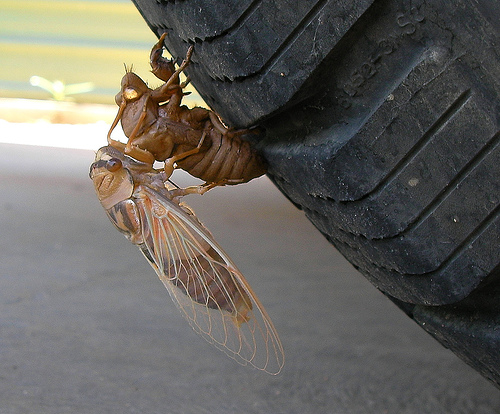Fidicina mannifera from Brazil, Photo by Leonardo Milhomem. 2005.
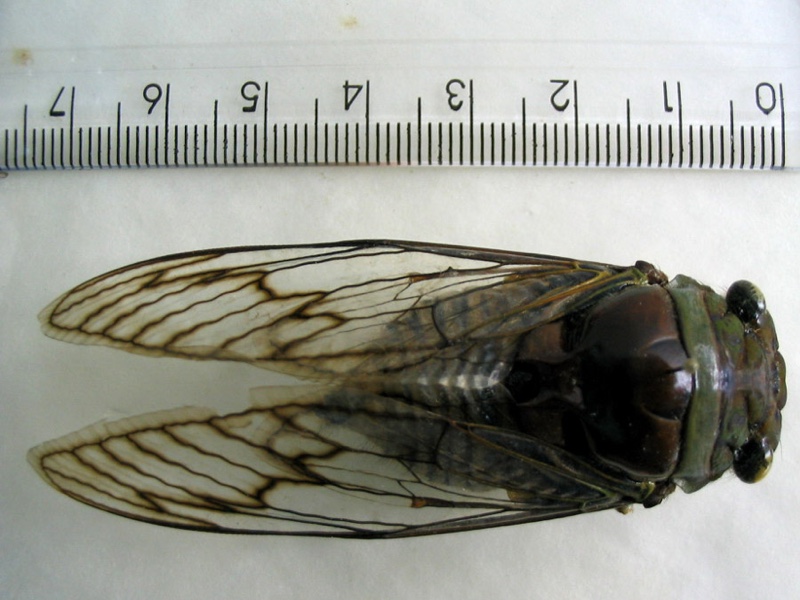
Genera of cicadas.
Fidicina mannifera from Brazil, Photo by Leonardo Milhomem. 2005.

Majeorona aper from Brazil, Photo by Leonardo Milhomem. 2005.
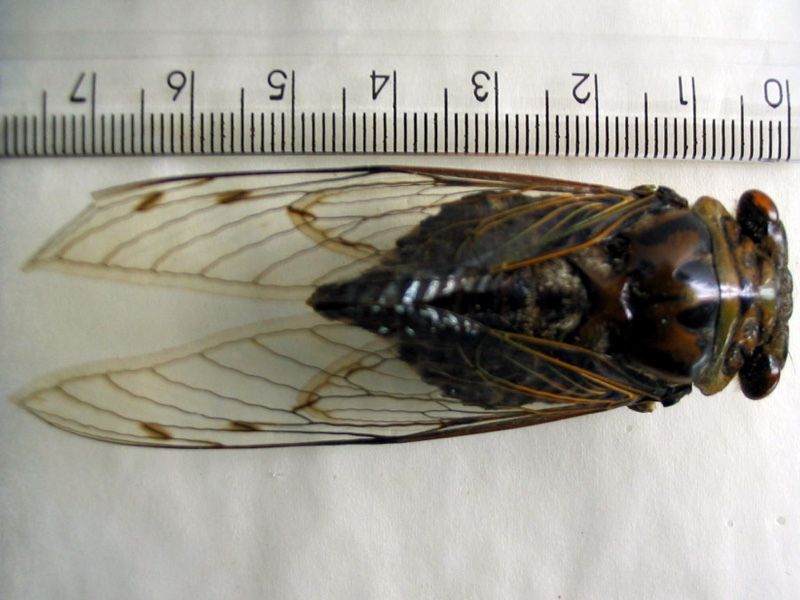
Quesada gigas from Brazil, Photo by Leonardo Milhomem. 2005.
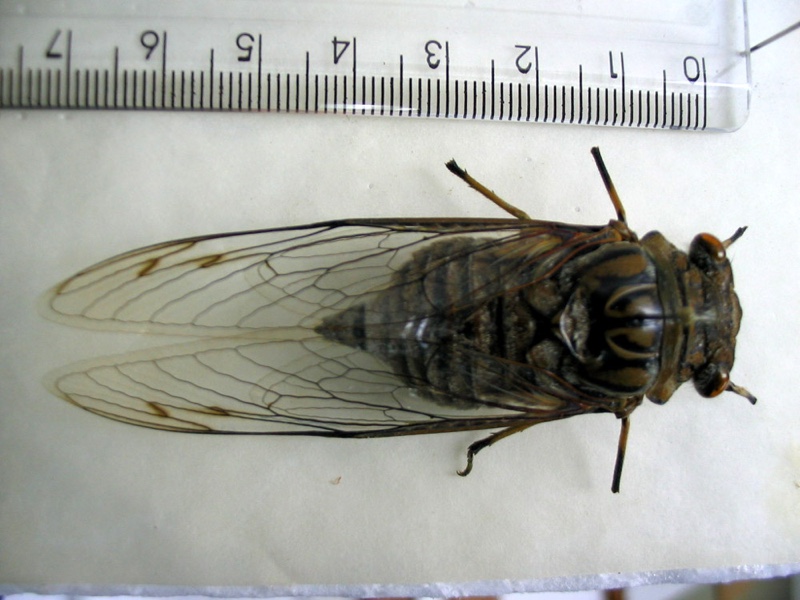
Continuing from part 1, Elias Bonaros did some digging and took these photos of first and second instar Magicicada periodical cicadas on a warm winter day (March 21, 2010).
Now you know what cicadas look like when they’re underground!
Generally speaking the ones with the bulbous abdomens are second instar, and the smaller ones with the less bulbous or not bulbous abdomens are first instar.
Have you every wondered what cicadas look like when they’re underground? Elias Bonaros did some digging and took these photos of first and second instar Magicicada periodical cicadas on a warm winter day (March 21, 2010). Magicicadas have 5 instars, or phases of development. Each phase has a slightly different appearance.
This is a probable second instar nymph of Magicicada septendecim (Periodical cicada) from the 2008 Brood XIV emergence. Dug up from beneath an oak tree. It was living approximately 4-6 inches from the ground surface. Temperature 70 degrees.
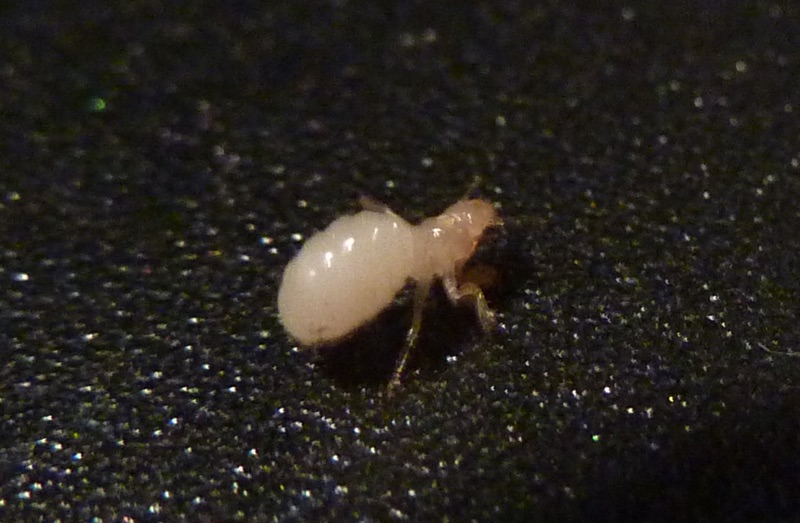
These are probable first and second instar nymphs of Magicicada septendecim (Periodical cicada) from the 2008 Brood XIV emergence. Dug up from beneath an oak tree. They were living approximately 4-6 inches from the ground surface. Temperature 70 deg.
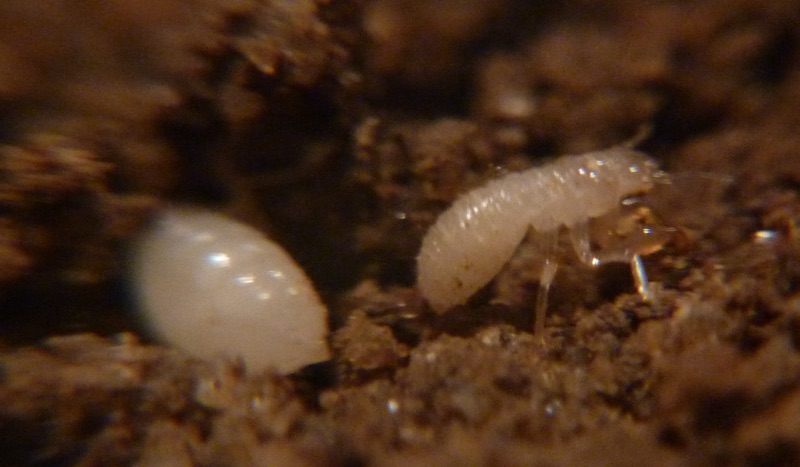
Male Neotibicen tibicen tibicen molting. Other names for this cicada include: Morning Cicada, Swamp Cicada and formerly Tibicen chloromera or chloromerus.
Click each image for larger images:
Joe Green’s Neocicada hieroglyphica photos from 2007, Florida, part 2:
Joe Green’s Neocicada hieroglyphica photos from 2007, Florida, part 1:
Okanagana rimosa exuvia (skins, shells) photos by Elias Bonaros. From 2010, I believe.
Note the dark lines on the abdomen — that’s an easy way to distinguish Okanagana exuvia from other types of cicadas.
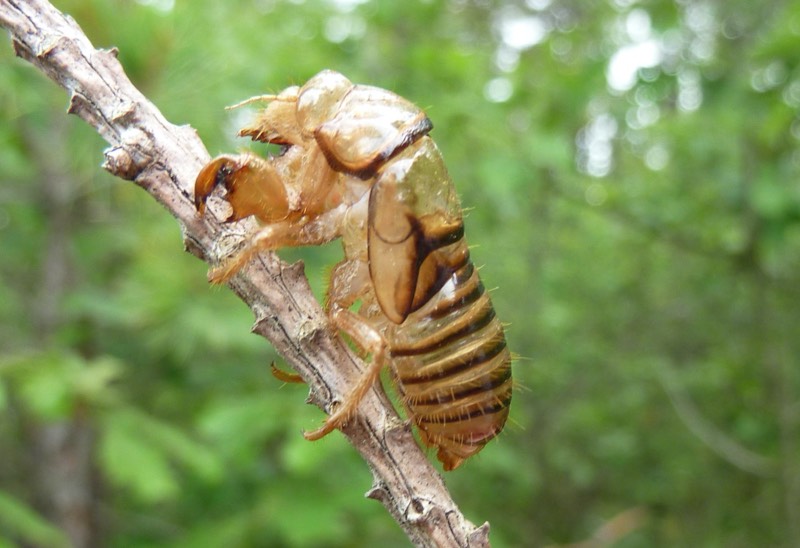
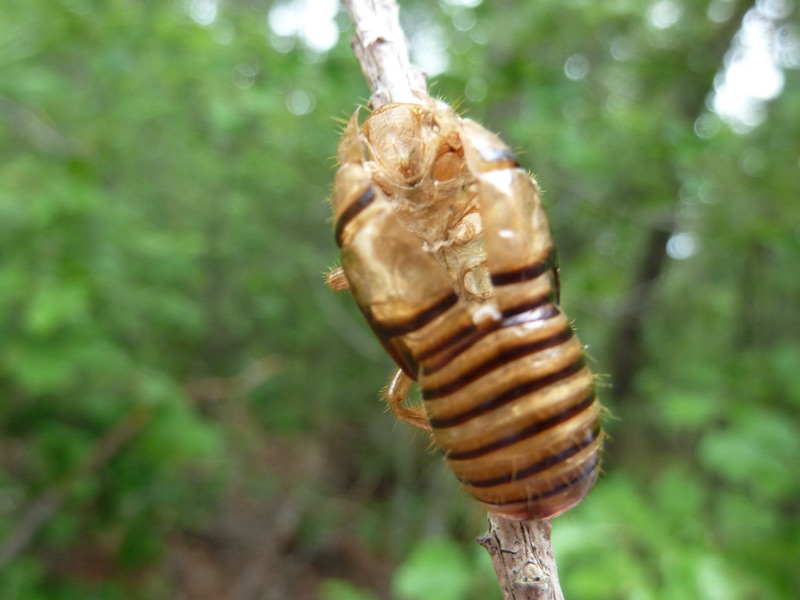
Orange Drummer (Thopha colorata) photos by Jodi from 2007. Australia.
Text for the photos from back in 2007: “Thanks to Jodi for allowing us to post some of her Orange Drummer (Thopha colorata) photos. Two today, two tomorrow! Apparently they’re hatching in droves in Central Australia.”
A molting Orange Drummer (Thopha colorata):
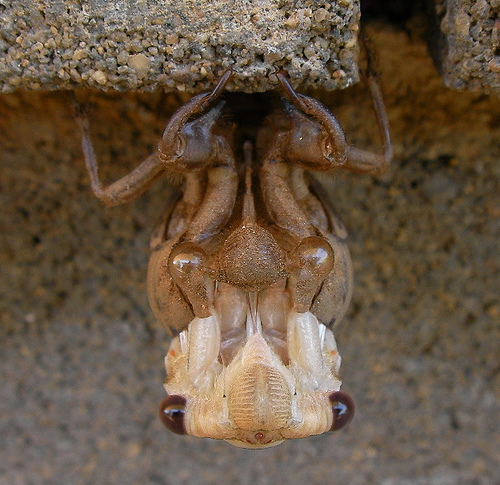
Orange Drummer (Thopha colorata):
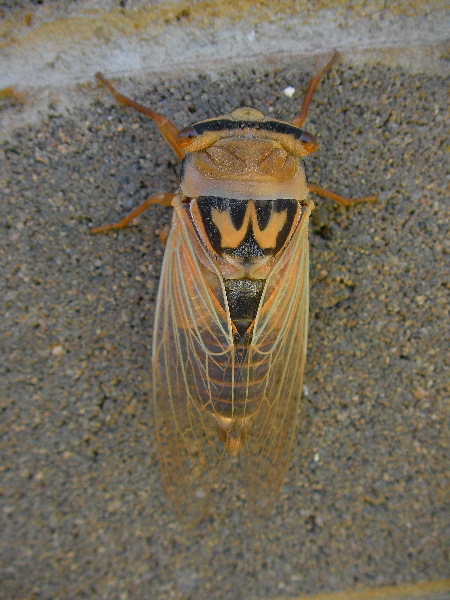
Teneral, recently molted Orange Drummer (Thopha colorata):
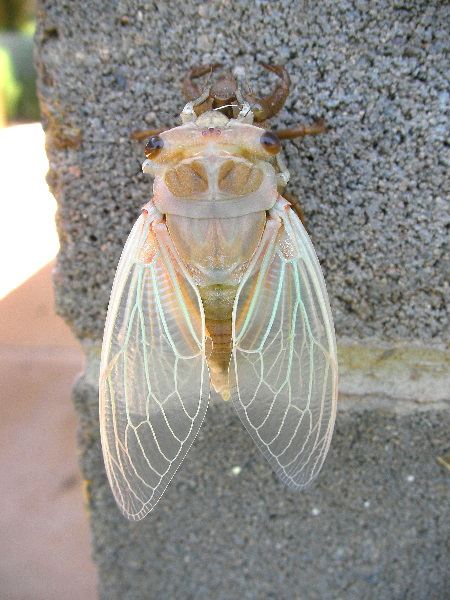
Teneral, recently molted Orange Drummer (Thopha colorata):
